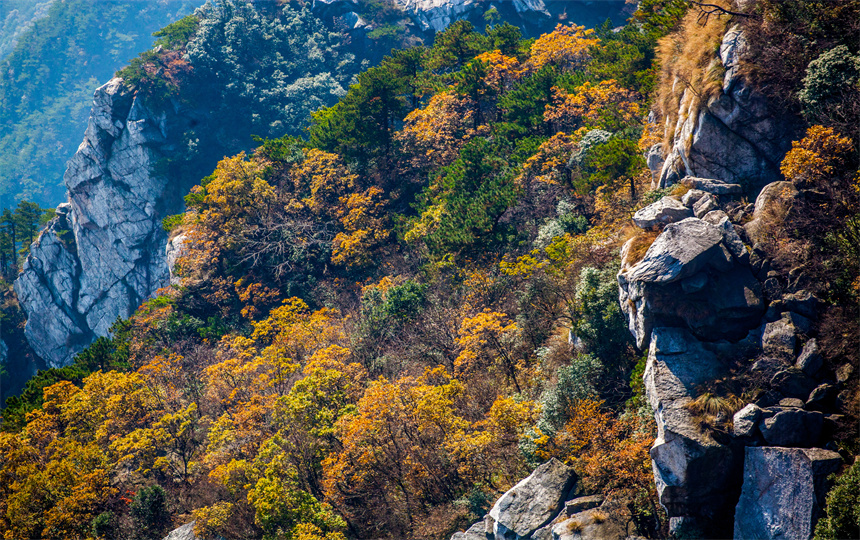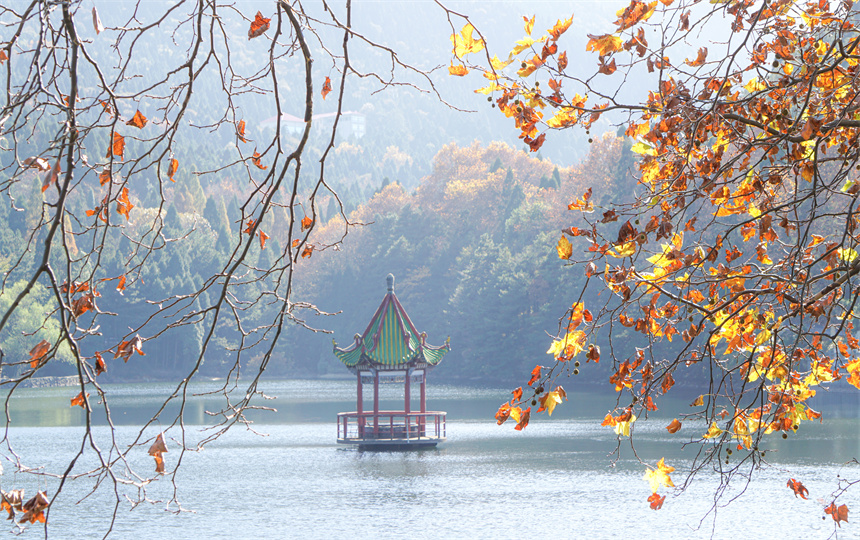Nestled in Jiangxi Province near the Yangtze River and Poyang Lake, Mount Lushan is one of China's most celebrated mountains—a UNESCO World Heritage Site that has inspired poets, painters, and philosophers for over 1,600 years. With its 90+ peaks, dramatic waterfalls, ancient academies, and cool summer climate, this "cultural landscape" offers international visitors a perfect blend of natural beauty and profound history.
Highlights of Lushan Mountain
1. Breathtaking Natural Wonders
Waterfalls: The Three-Step Waterfall (San Die Quan) plunges 155 meters over three terraces—locals say "no trip to Lushan is complete without seeing it". Other cascades like Black Dragon Pool weave through lush valleys.
Peaks: The Five Old Men Peaks (Wulao Feng) resemble seated elders and offer sunrise views. Dahanyang Peak (1,474m) is the highest.
Lakes & Valleys: Poyang Lake vistas from Hanpokou, the violin-shaped Riqin Lake, and the sculpted cliffs of Flower Path Ravine.
2. Living Cultural Heritage
Poetry & Art: Over 16,000 poems celebrate Lushan. Its landscapes birthed China’s shan shui painting tradition.
Historic Sites:
White Deer Grotto Academy (940 AD)—one of China’s "Four Great Academies".
Donglin Temple (1,600 years old), birthplace of Pure Land Buddhism.
Guling Town’s colonial villas, where 19th-century missionaries and modern leaders like Chiang Kai-shek summered.
3. Unique Ecological Features
A "foggy mountain" with 192 foggy days/year, creating ethereal vistas.
Rich biodiversity: 1,000+ plant species and wildlife like monkeys (watch for snakes on trails!).
Summer temperatures 5–10°C cooler than lowlands, making it China’s original "summer retreat".
Best Time to Visit
Ideal Seasons:
May–August: Peak season with comfortable temps (~20°C). Waterfalls are fullest; lush greenery.
April & October: Fewer crowds. April brings blooms; October has golden foliage.
Monthly Highlights:
| Month | Pros | Cons |
|---|---|---|
| Apr-May | Mild weather; flowers | Some rain |
| Jun-Aug | Best waterfalls; cool escape | Crowds; fog may obscure views |
| Sep-Oct | Clear skies; autumn colors | Cooler nights |
| Nov-Mar | Snowscapes; lowest prices | Some trails close; chilly (avg. 5°C) |
Avoid: Chinese holidays (Oct 1–7, Lunar New Year) when crowds surge.
Travel Tips
1. Getting There
From Nanchang: Buses run to Jiujiang (1.5hrs), then transfer to Lushan (¥9 bus; last departure ~3PM).
From Wuhan/Shanghai: High-speed rail to Jiujiang, then taxi (¥150–200).
Park Entry: Buy tickets at North/South Gates (¥160–180; valid 7 days).
2. Navigating the Park
Guling Town is the hub—book lodgings here.
Use shuttle buses (¥70–90) between distant sites like Five Old Men Peaks and Three-Step Waterfall.
Hiking note: Trails can be slippery; wear grippy shoes. Stick to paths to avoid snakes.
3. Key Attractions Checklist
Must-sees: Three-Step Waterfall, Five Old Men Peaks, Hanpokou sunrise, White Deer Grotto Academy.
Hidden gems: Flower Path’s azaleas, Donglin Temple’s ancient halls.
Quirky stop: Lushan Love Cinema—shows only The Lushan Romance (1980) daily, a Guinness record!
4. Cultural Etiquette
Respect sacred sites: Remove hats/shoes in temples.
No touching ancient inscriptions (oil damages them).
Try local tea: Lushan Cloud Mist Tea is a famed souvenir.
5. Packing List
Layers: Mountain weather shifts fast.
Rain gear: Annual rainfall exceeds 1,800mm.
Binoculars: For spotting wildlife and distant carvings.
6. Safety Notes
Fog caution: Drive slowly; trails may be obscured.
Hydrate: High altitude (1,000m+) increases dehydration risk.
Service Hotline: 400-900-6162.




































